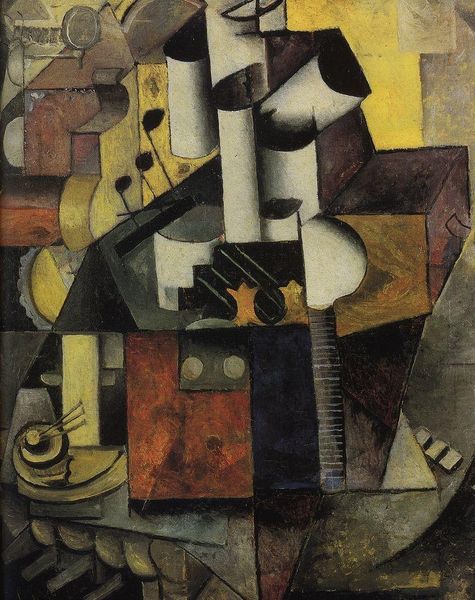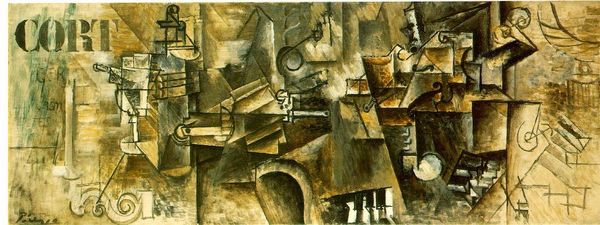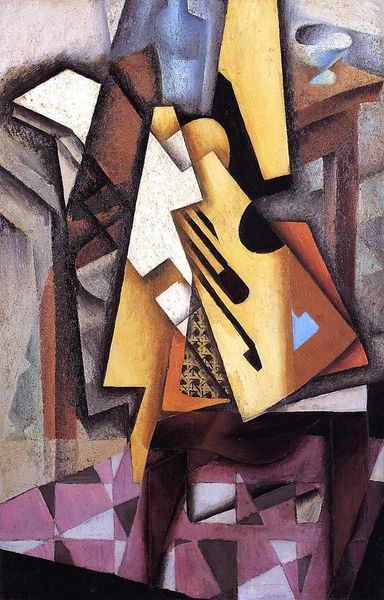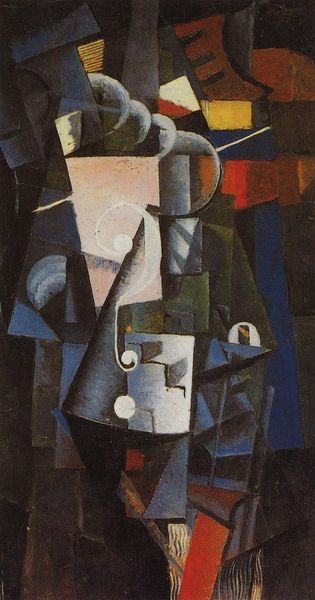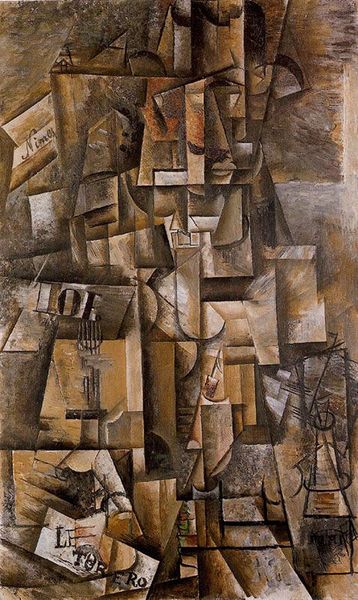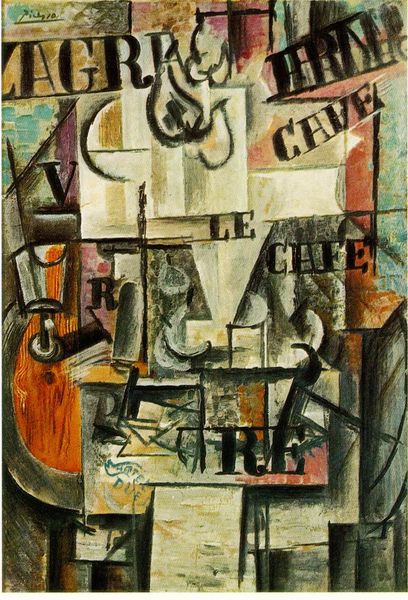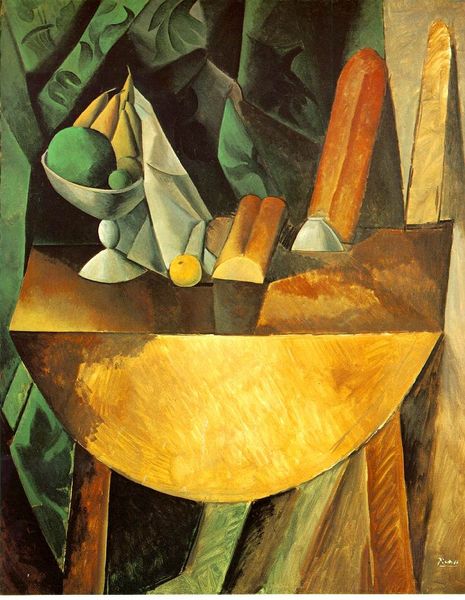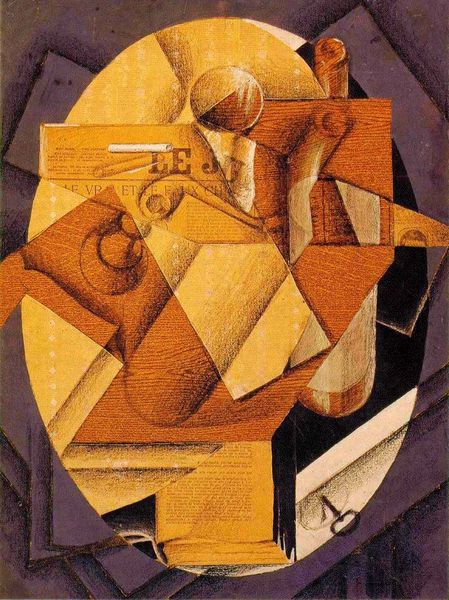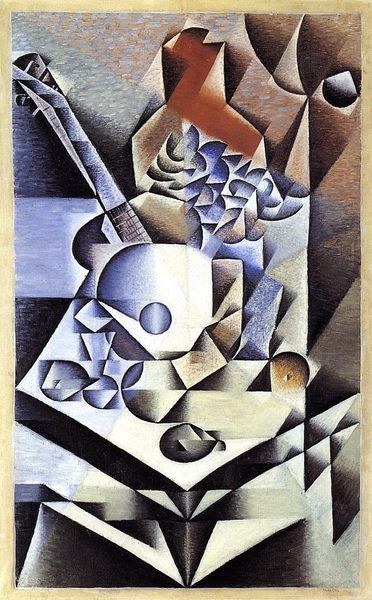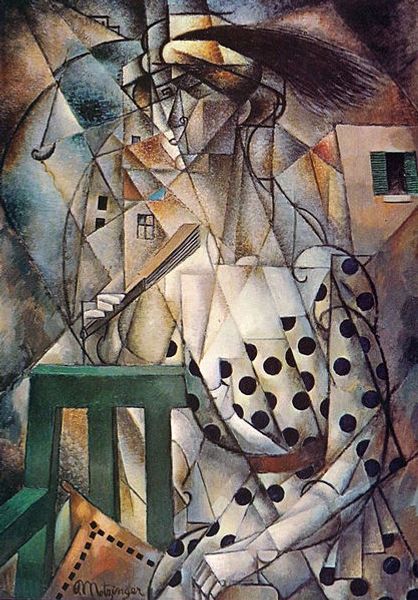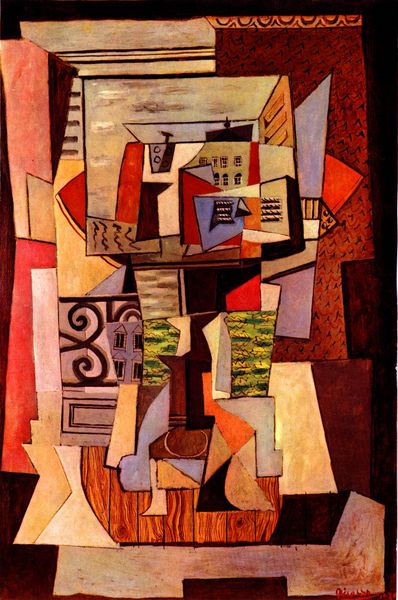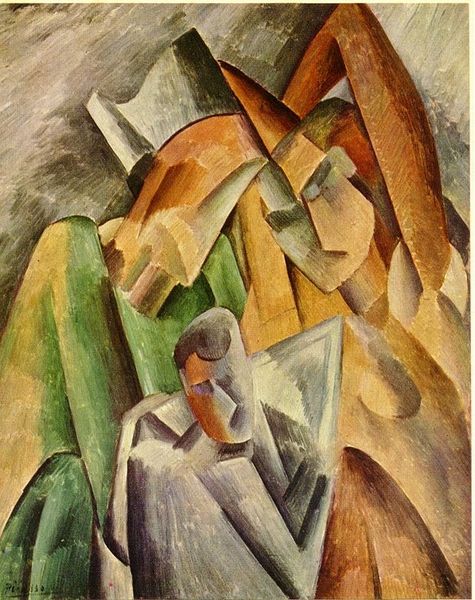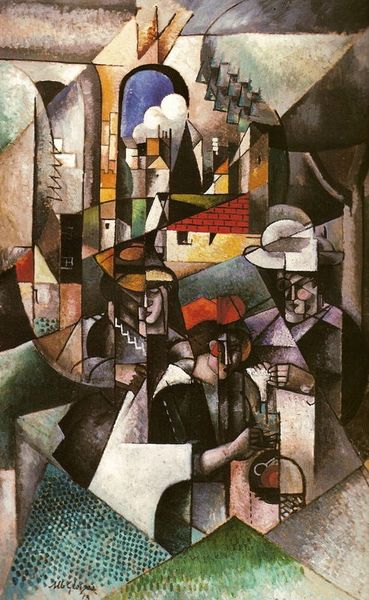
painting, oil-paint, photography
#
fauvism
#
painting
#
oil-paint
#
photography
#
oil painting
#
geometric
#
modernism
Dimensions: 92 x 71 cm
Copyright: Public domain US
Editor: This oil painting, simply titled "Still Life," was created around 1910 by André Derain. I find the angularity of the forms quite striking – almost like a deconstructed still life. What's your take on this piece? Curator: I’m drawn to the artist's treatment of the materials depicted. Notice the rough, almost crude application of the oil paint itself. It calls attention to the very act of painting. Derain isn't just representing these objects; he's highlighting the physical properties of paint and how its manipulation constructs our understanding of form and space. Editor: That's interesting. So, it's not just about *what* is depicted but also *how* it's depicted? Curator: Precisely. Think about the period: early 20th century. Industrial production was transforming daily life, and artists were grappling with what that meant for handmade objects and the value of craft. Does the rawness of Derain’s technique hint at a tension between mechanized production and the individual artisan's hand? What materials were readily accessible at that time that influenced the painting styles of the artist? Editor: It almost feels like he's rejecting the idea of perfect, polished representation, and instead embracing a more raw, honest approach to materials. Curator: Indeed. Consider also how the fractured forms hint at the burgeoning Cubist movement. Was Derain commenting on the nature of perception and the breakdown of traditional forms, reflecting a broader societal shift away from established norms and mass consumerism? Editor: That perspective really makes me think differently about the materials he chose and how he applied them. It is very modern. Curator: Exactly, considering the social context allows us a deeper appreciation of Derain's work beyond a simple arrangement of objects. Editor: I'll definitely be considering materiality more closely in future analyses, especially within its cultural context. Thanks for pointing out Derain's intent, and all of the questions it raises.
Comments
No comments
Be the first to comment and join the conversation on the ultimate creative platform.
